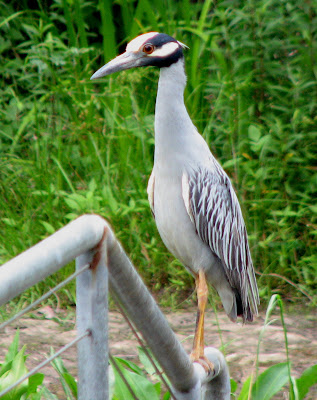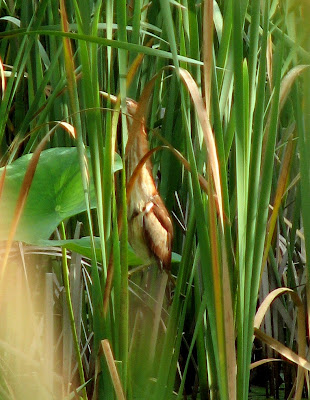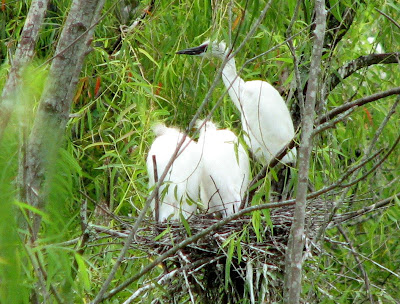I spent a couple of hours at Sheldon Lake on Sunday morning, hoping to see lots of nesting activity in the heron and egret rookery there.
Unfortunately, water hyacinth has largely choked Carpenter's Bayou and the section of the lake along Garrett Road. If they don't get the money soon to clear out the invasive plants, the effect on the rookeries is going to be devastating.

On a brighter note, I spotted spot my first Purple Gallinules of 2009, and the sky overhead was very busy with Great Blue and Tricolored Herons, White Ibis and Great Egrets. No doubt these and other birds have their nests on islands in the middle of the lake.
I stopped in at one of the jetties along Fauna Road where there always used to be scores of nests, including those of Anhingas, Black-crowned Night Herons and Roseate Spoonbills. Again the water was covered with plants and no nests were visible. However, the resident Red-shouldered Hawks were in evidence as usual.

At the parking lot at the south end of Fauna/Pineland Road, the lake was clearer and there were a few Great Egret nests. This area also gave me views of several Little Blue Herons and a couple of Green Herons.


As before, the sky was busy with herons, egrets and ibis. The path here was lined with Passion Flower vines.

Next I drove to the Environmental Learning Center, where I birded the prairie area behind the Center. Apart from Black-bellied Whistling Ducks, the only birds here were Scissor-tailed Flycatchers.
Most of the ponds at the Center were quiet, with only Common Moorhens, Yellow-crowned Night Herons and the odd Pied-billed Grebe.


However, one pond had a Least Bittern, a bird that I rarely see - and that is always hard to photograph!

Finally, one pond had nests, lots of nests.

They seemed to be mainly those of Little Blue Herons, Snowy Egrets and Yellow-crowned Night Herons.


A quick walk along the trails behind the ponds turned up no passerine birds except Northern Cardinals.

Leaving the Center, I stopped to take a photo of a Black-bellied Whistling Duck. I never cease to marvel at the ease with which these large birds can balance on utility wires.





























































